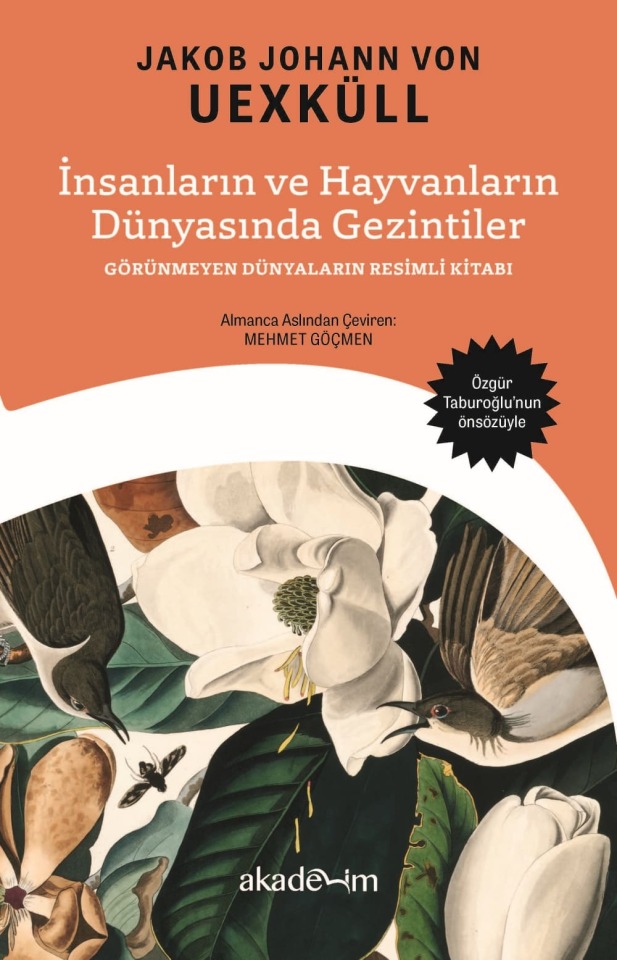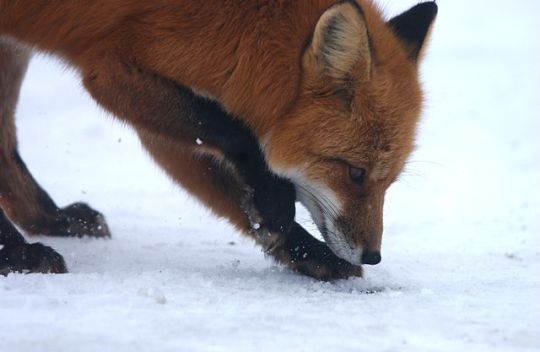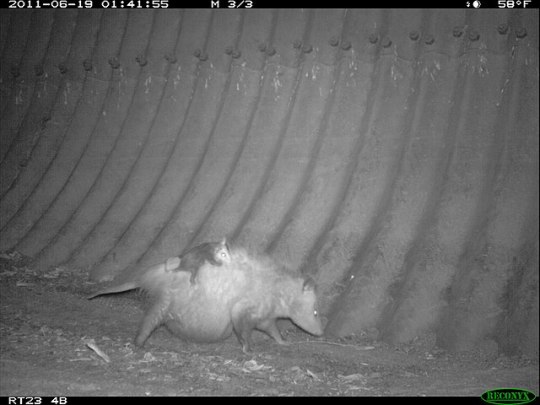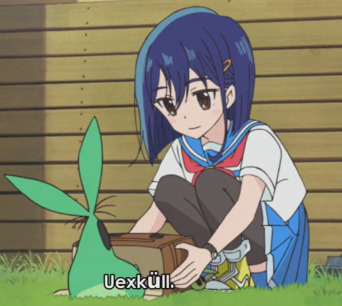#Uexküll
Text

#Flip Flappers#フリップフラッパーズ#Cocona#Uexküll#Tongue#Lick My Nose#Green Rabbits of Tumblr#Anime#Anime GIF#My GIFs#ffeatherisffeather
26 notes
·
View notes
Text

2016-11-12 23:42:33
11 notes
·
View notes
Text
"Accordingto Cassirer, in Die Lebenslehre Uexküll juxtaposes geometry and biology. "
カッシーラーによれば、ユクスキュルは『生命論』(Die Lebenslehre)の中で幾何学と生物学を並置させている。)
Chang, H.- liang. (2004). Semiotician or hermeneutician? Jakob von Uexküll revisited. Sign Systems Studies, 32(1/2), 115–138. https://doi.org/10.12697/SSS.2004.32.1-2.05
memo:
ユクスキュルは全く古くないな、むしろ今の生物学の技術でもって、彼の注目したポイントに科学的なメスを入れるといい。たとえば、解析的な観点からすると、(情報)幾何学、非線形科学など相性がいいように思う。
0 notes
Text
«Sul finire del Sedicesimo secolo la volta celeste si alzava, come la vediamo noi ancora oggi, non di venti metri come nel planetario, ma circa a non più di trenta chilometri sopra di noi, come un’inflessibile costruzione. Sopra questa fortezza celesta troneggiava il malefico Dio, la cui vista penetrava in tutti gli errori degli uomini, che puniva senza pietà con la guerra, la peste, gli incendi. La volta celeste, che sosteneva i palazzi e i giardini di Dio, cingeva come un guscio d’uovo la Terra liberamente sospesa nel vuoto.
«A questo punto entrò in scena Giordano Bruno e ruppe il guscio dell’uovo cosmico aprendo lo sguardo meravigliato e felice dell’umanità sull’infinità dello spazio. Le stelle fisse non erano più i bottoni dorati inchiodati all’immobile parete celeste, ma divennero barche dorate che si muovevano liberamente nell’etere a grande distanza le une dalle altre. Tutta la magnificenza dei palazzi divini si era volatilizzata. Se fossi un grande artista come lei», disse lo zoologo volgendosi ora al pittore, «progetterei un affresco imponente che, come contraltare del Giudizio Universale di Michelangelo, raffiguri Giordano Bruno sul rogo. Ma le fiamme, che devono bruciarlo, salgono verso il cielo e incendiano la volta celeste come fosse una misera quinta teatrale. Si vedrebbero quindi la città di Dio con i suoi opulenti palazzi crollare, dissolvendosi nel fumo e nella cenere, e insieme ad essi cadrebbero vittime dell’eterna distruzione angeli e santi. In lontananza, le stelle dell’Orsa Maggiore, come sfere luminose, apparirebbero in segno di vittoria.»
Jakob von Uexküll, L'immortale spirito nella natura, traduzione dal tedesco di Nicola Zippel, Castelvecchi (collana I Timoni), 2014. [Libro elettronico]
[Edizione originale: Der unsterbliche Geist in der Natur, Christian Wegner Verlag, Hamburg; testo pubblicato in tre parti fra il 1938 ed il 1947]
#libri#letture#leggere#saggi#saggistica#Giordano Bruno#Jakob von Uexküll#scienza#scienze#conoscienza#biologia#libertà di pensiero#Nicola Zippel#astronomia#teologia#atei#libero pensiero#ateismo#etologia#ecologia#agnosticismo#libertà di parola#agnostici#umwelt#ambiente#percezione#filosofi#filosofia#fenomenologia#semiotica
13 notes
·
View notes
Text
May you have a perfect [blank]. Not omnipotent, but rather founded on the correct use of all available means.
4 notes
·
View notes
Text
"Nothing is purely somatic."
by Dr.Harald Wiesendanger– Klartext
What the mainstream media is hiding
Conventional medicine reaches its limits as long as it views and treats patients as bodies without souls: as biochemical machines that need to be repaired. Psychosomatics leads to a shadowy existence as a marginal field.
It wouldn’t have taken much for him to be able to celebrate his 100th birthday with my foundation…
#Foundation Ways Out#Harald Wiesendanger#Insult#Psychosomatic illnesses#Psychosomatics#Therapy camps#Thure von Uexküll
0 notes
Text
Jakob Johann von Uexküll – İnsanların ve Hayvanların Dünyasında Gezintiler (2023)
Biyosemiyotiğin öncüsü Jakob Johann von Uexküll, ekolojik düşüncenin bu kurucu metninde her canlının yalnızca kendisine, onun deyimiyle, Umwelt’ine ait bir mekânı ve buna karşılık gelen bir zamanı olduğu fikrini dile getiriyor.
Bunun sonucunda Agamben’in ifadesiyle, insanmerkezci bakış açısının terk edilmesi ve doğa imgesinin insan ölçütünden arındırılmasının önü açılmış; Deleuze ve Guattari’nin…

View On WordPress
#2023#Akademim Yayıncılık#Görünmeyen Dünyaların Resimli Kitabı#Georg Kriszat#Jakob Johann von Uexküll#Mehmet Göçmen#İnsanların ve Hayvanların Dünyasında Gezintiler
0 notes
Text
L’étoffe des rêves
“Jacob von Uexküll”.
En 1904, William James a formellement exprimé ses doutes quant à la notion de conscience telle qu’elle est habituellement présentée dans les traités de psychologie.i La conscience y est regardée comme possédant une essence propre, distincte de l’essence des choses qui en sont dépourvues. Ces dernières « existent », en tant que telles, mais elles ne possèdent qu’une existence…

View On WordPress
0 notes
Text









#this question is actually important because if y'all vote on it I can just memorize a name#and thus not look stupid trying to think of a male character for 5 minutes if somebody asks for my like favorite boy
34 notes
·
View notes
Text
I'm like halfway through watching Flip Flappers with @self-loving-vampire and it's been a really great time so far.
The show is cute and both of the main characters are really endearing, each in their own way. I love Papika's enthusiasm and adventurousness, and Cocona's insecurity/fear is more relatable than perhaps I would like. Their dynamic of protecting/taking care of each other is really nice too.

It's also nice when the show gets really stylized for a little bit. It does an excellent job with the visuals and the artists are clearly having fun. Pure Illusion always looks so striking and distinct, it does a really good job of conveying the dreamland feel they seem to be going for.




I keep finding myself with a smile on my face while I watch it. The ending song is really cute too!
In short, time for Uexküll.

#flip flappers#I'm really loving it so far#also I think Elden Ring messages have poisoned my brain#I get thoughts in that format now sometimes
72 notes
·
View notes
Note
Do you believe it’s helpful to compare non-human animal intelligence to human intelligence?
I think that it can be helpful as a way of trying to understand the cognitive capacities of non-human animals, so long as we recognise the limits of any such comparison. Intelligence is an inherently human concept; we base intelligence on what we can do. That isn’t necessarily bad, we need a reference point after all, but we’ve made the mistake of judging our own kind of intelligence as the only kind there is.
We are really just scratching the surface when it comes to animal intelligence and perception. We can measure how they perform tasks that we invented to measure intelligence as we define it, but we can never really know what it is ‘like’ to be a dog, or a bat, or a fish. Many behaviours we think of as ‘intelligent’ have no benefit for many animals, so how ‘intelligent’ would it be for them to develop it?
Likewise, there are realms of perception that we just can’t touch. We consistently underestimate how radically different every creature’s inner and outer world is to our own. It is what the biologist Jakob von Uexküll calls an animal’s ‘Umwelt,’ their own unique sensory world. We can’t even do this with animals we know well, never mind with animals radically different to us.
Just look at dogs. Most of the intelligence experiments involve getting dogs to perform a specific task, and most of it is based on sighted intelligence, because that is at the centre of our Umwelt. But the primary sensory modality of a dog is not sight, it is smell. How often do we think a dog isn’t performing a set task because they can’t remember that the first button produces food and the second button doesn’t, when they’re actually responding to perceptual clues we can’t even perceive?
There is just so much about animal behaviour that we don’t understand. Why do cephalopods like octopus, squid, and cuttlefish put on elaborate colour shows when alone, when their eyes appear to only see in grayscale? What are they perceiving and what are they responding to? How do we measure animal intelligence for an animal that has sonar? Or an animal that can see ultraviolet light? Or can sense minor vibrations from miles away?
Intelligence is just such a distinctly human concept that it is hard to apply to minds that are so different to our own. We sort of assume intelligence is a scale with us at the top, and we measure how close other animals are to us on that same scale. But non-humans need a different scale entirely. That is the biggest problem with the study of animal intelligence in general, we too often assume we’re studying lesser minds, rather than just other minds.
22 notes
·
View notes
Text

Die Lebenslehre (生命の理論)
Uexküll, Jakob von (1864-1944)
Potsdam : Müller & Kiepenheuer [u.a.], 1930
0 notes
Text
Umwelt: What Matters Most in the World
(Originally posted at my blog at https://rebeccalexa.com/umwelt-what-matters-most-in-the-world/)
I will be the first to admit that a lot of philosophy tends to bend my brain in ways that I’m really not prepared for. I’m a very earthy creature, and I am more comfortable in physical, solid spaces than in abstract conceptualizations. Even the modalities of psychology I gravitated toward in grad school tended to be based in our interactions with physical nature, and measurable effects thereof. But it was a casual discussion on philosophy with regards to the awareness of animals that introduced me to the concept of umwelt.

Originally coined by biologist Jakob Johann Freiherr von Uexküll, umwelt describes the unique way in which a given animal experiences the world around it. Uexküll looked at how various beings take in information through their senses; the way that a blind, deaf worm engages with their environment through taste and touch is very different from how we with our hearing and color vision connect with our world. Even when I am walking with my dog out in the woods, her interpretation of what’s going on around us is going to be much more heavily influenced by hearing, and especially smell, than my sight-heavy approach. (And when we engage with each other, our respective umwelten create a semiosphere!)
So umwelt is essentially the sum total of all the ways in which an animal takes in that sensory information and attaches meaning to each fragment thereof. It’s how they tell the story of the world around them, and understand their place in it. And they rank the signs according to importance; umwelt is more strongly formed by things that are of particular interest to the animal.
That means that umwelt, rather than being constant throughout life, is always shifting according to new sensory input, or changes in how the senses work; as my dog gets older, her hearing and vision may not be as good as they were, but if her nose stays sharp then smells may become an even more important part of how she navigates her world.

Or look at a Virginia opossum (Didelphis virginiana), which is born as a blind, deaf little hairless being with two front legs that they use to crawl to the mother’s abdominal pouch. At that time their umwelt centers on seeking and retaining the warmth of their mother’s pouch, and the sensation of the constant flow of warm, nourishing milk. After about ten weeks they leave the pouch as a miniature furry little possum and travel on their mother’s back while learning to walk; their umwelt has expanded quite a bit to include the sight and smell of their mother, the visual and scent cues that tell them how close they are to known food sources, and visual, sound, and audio information warning of various dangers. At around five months, the opossum becomes independent, and their mother fades from their umwelt while being replaced by an even larger network of food, danger, and perhaps even potential mates. Over a lifetime, as the opossum’s senses develop (and, with age, decline) and their priorities shift, so does their umwelt evolve with them.
This then led me into a bit of a rabbit hole with biosemiotics. Semiotics is the study of symbols and the communication of meaning, to include communication with the self. Biosemiotics, then, is how non-human beings assign meaning to various things in their lives, and interpret the world they live in. Zoosemiotics specifically refers to the semiotics of animals, like the examples I’ve given so far, while endosemiotics (aka phytosemiotics or vegetative semiotics) is semiotics at a cellular or even molecular level.

One example of endosemiotics can be found in our immune systems. A B lymphocyte can recognize an invader such as a virus or bacteria, and it sends out a signal (an antigen) to T lymphocytes that then attack the invader. The B lymphocyte’s umwelt consists of information received through surface receptors that can detect certain proteins and other molecules, and the response it’s programmed to have as a result of detecting an invader. The T lymphocyte’s umwelt, on the other hand, centers on the B lymphocyte’s antigen signal, as well as the invader itself.
Biosemiotics is important because it moves meaning-making beyond humans, demonstrating that we are not the only beings who assign more importance to one part of our world than another. It promotes the idea that human language is not necessary for an organism to be able to find meaning in their environment. I’m cautious about anthropomorphization–assigning human traits to non-human beings–but biosemiotics allows each being to be its own unique self, rather than being gauged by human standards.
It’s all too easy for me to get overwhelmed by just how technical some of the discussion over biosemiotics can get (especially when delving into the “semotics” part of it!) But my takeaway is that it’s nice to have a term–umwelt–that encapsulates the unique experience that every animal, plant, fungus, slime mold, and other being has, no matter how large or small its world may be.
I can envision millions upon millions of overlapping umwelten in every ecosystem, becoming semiospheres whenever two or more of those umwelten nudge, slide, or crash into each other. I’m already delighted by knowing that I myself contain several ecosystems, with microbiomes in my organs and on my skin and more. But I can now also consider the umwelten and semiospheres of the lymphocytes in my immune system, along with all the other cells that are carrying on their existences within my various tissues, fluids, and so forth.
Of course, this gets into discussions of whether umwelt requires some level of consciousness, the nature of consciousness, sentience vs. sapience, etc., etc., all of which are the sort of headache-inducing philosophical discussions that I try to avoid at this stage of my life. So I can understand that this whole umwelt-biosemiotics thing is still being hammered out and explored and critiqued, but also use it to augment my own personal model of my world, internal and external (my innenwelt!) And for now, umwelt is a perfectly good shorthand for “the unique way in which an organism experiences its environment.”
Did you enjoy this post? Consider taking one of my online foraging and natural history classes, checking out my other articles, or picking up a paperback or ebook I’ve written! You can even buy me a coffee here!
#umwelt#nature#vocabulary#vocab#natural history#natural philosophy#philosophy#psychology#ecopsychology#consciousness#semiotics#biosemiotics#symbols#wildlife#ecology#biology#science#scicomm#science communication#long post
78 notes
·
View notes
Text
would people like to know my idea on why the bunny in flip flappers is named uexküll
9 notes
·
View notes
